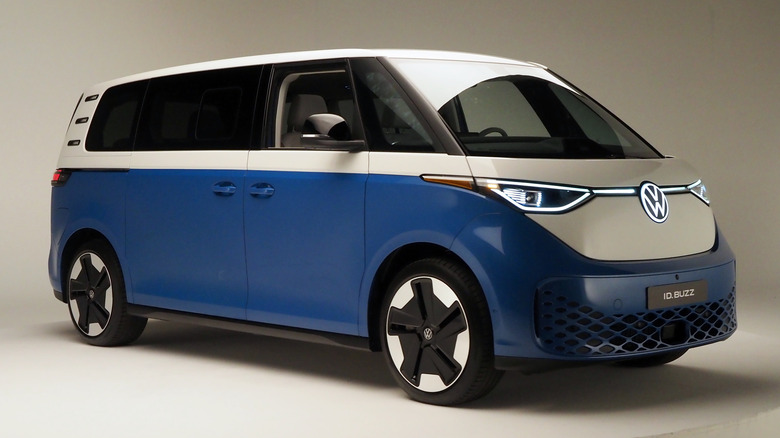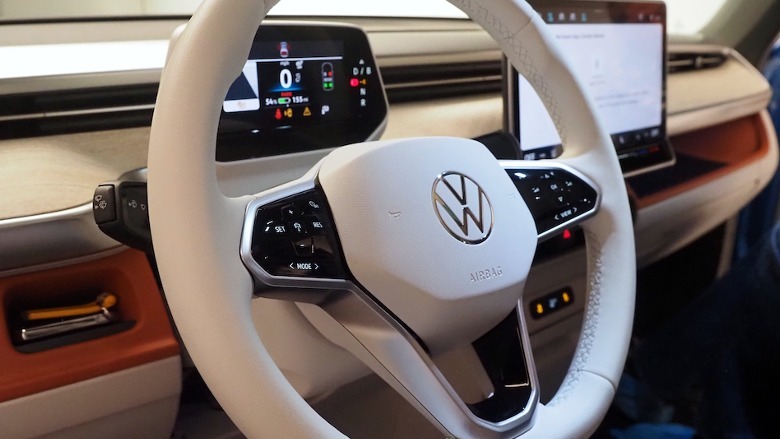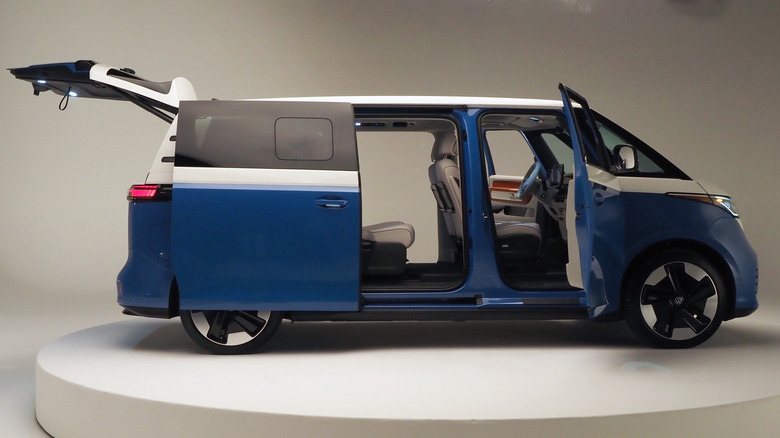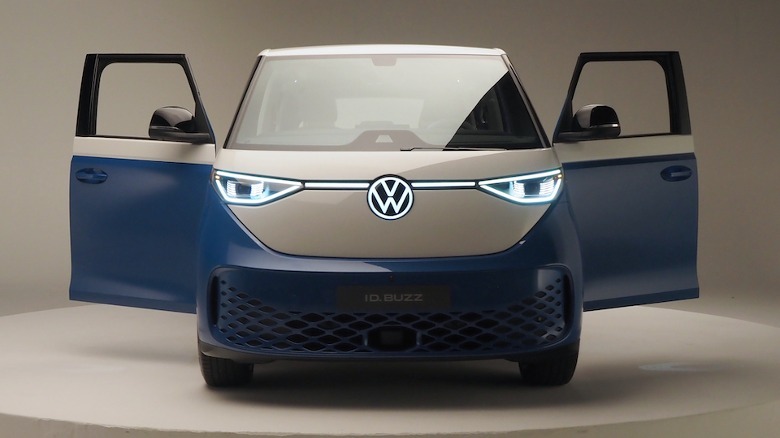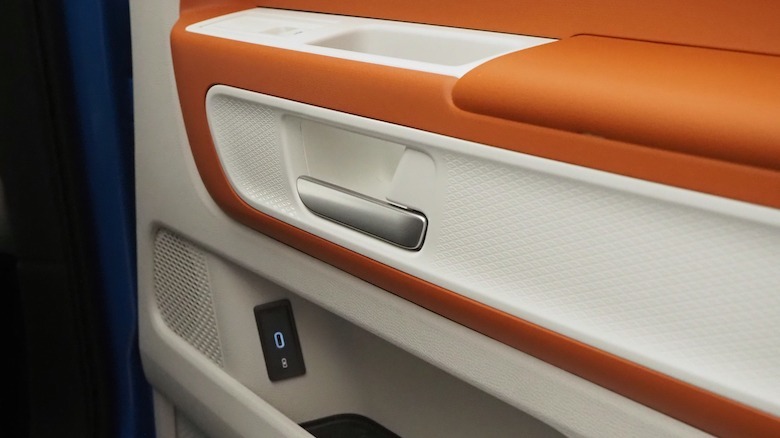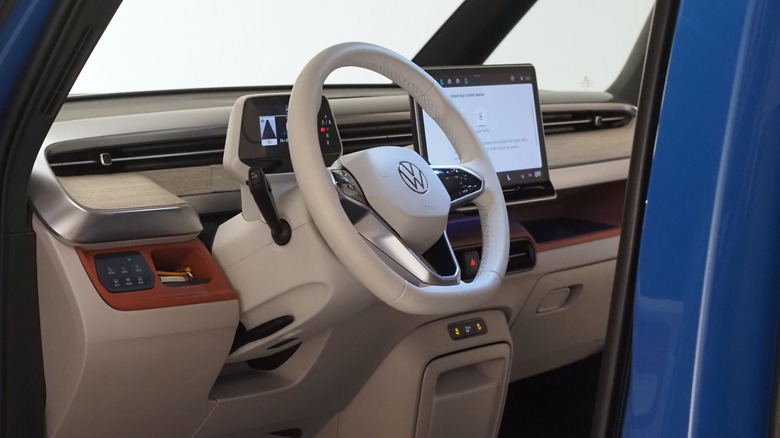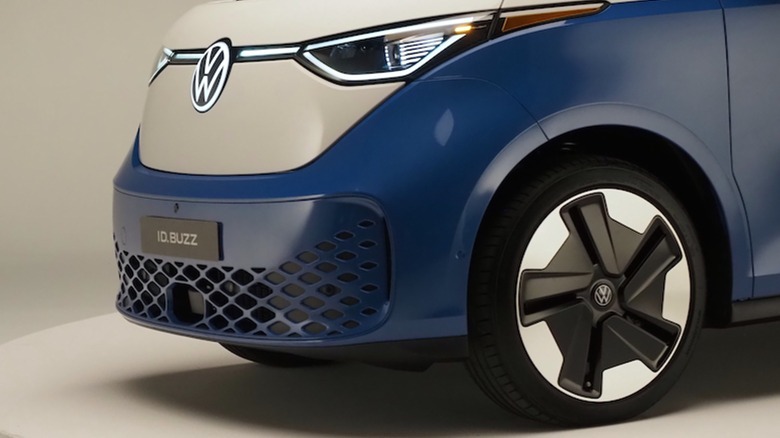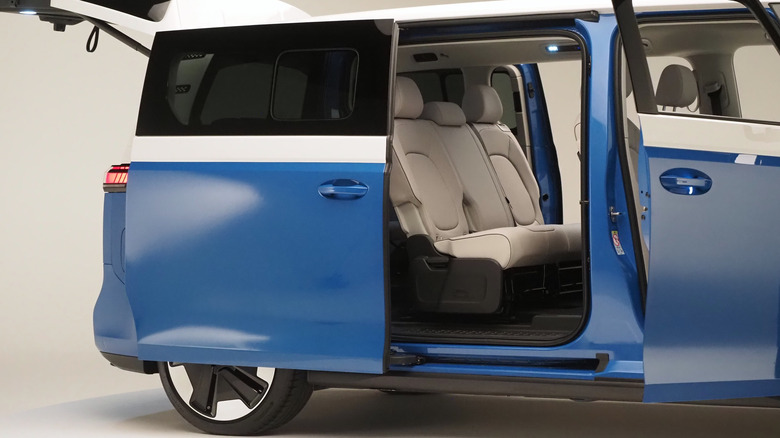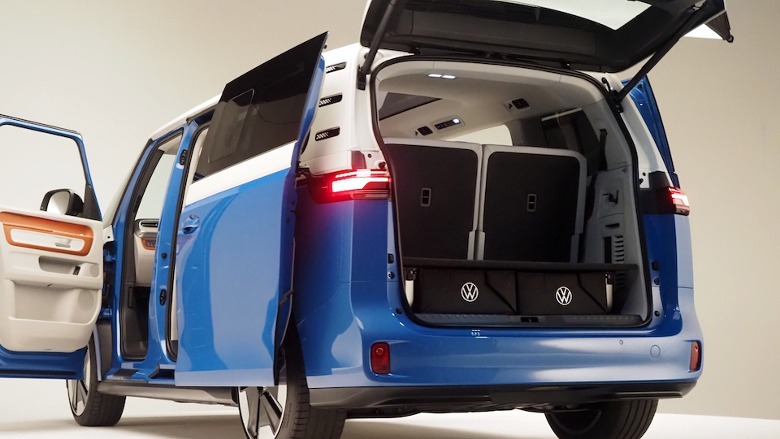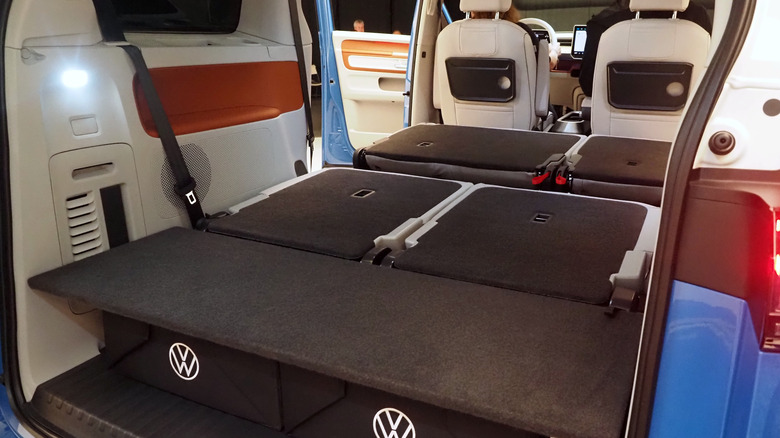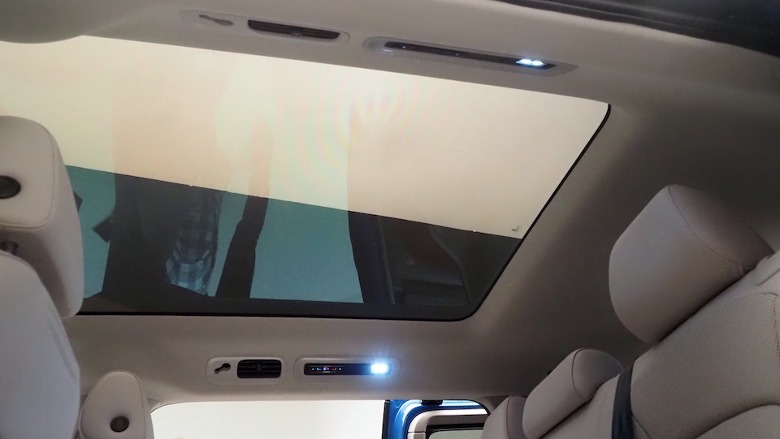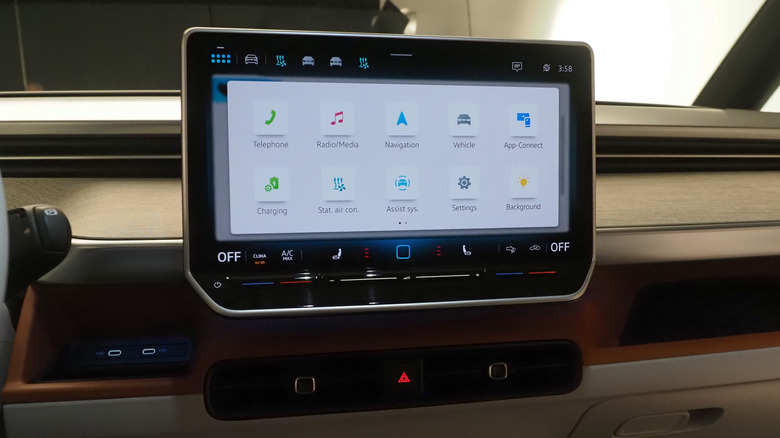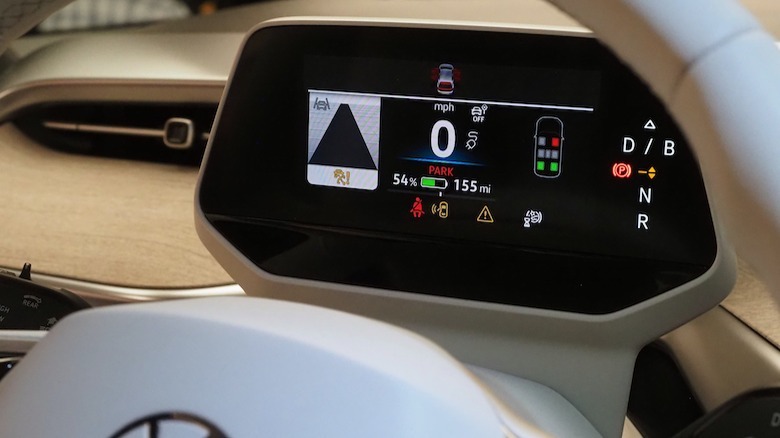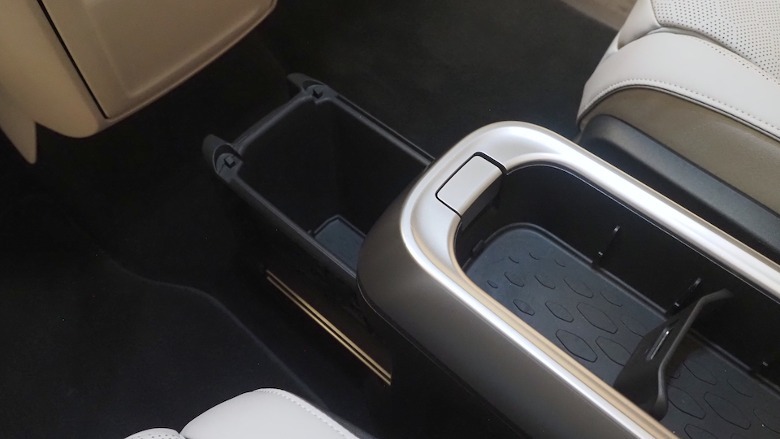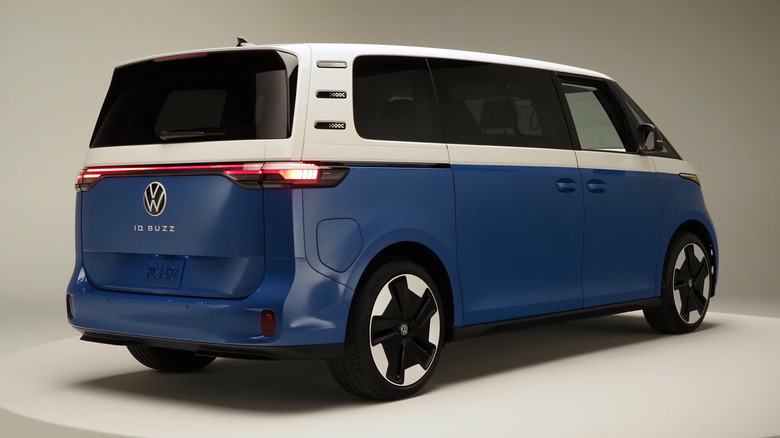2025 Volkswagen ID. Buzz Revealed In Three-Row US Form: What You Need To Know
Volkswagen's ID. Buzz for the U.S. market has finally been revealed in production form, a long-wheelbase, three-row version of what's arguably the automaker's most eagerly anticipated EV so far. Inspired by the iconic VW Microbus models of the 1960s and '70s, the production ID. Buzz was teased by the head-turning ID BUZZ concept of 2016, which surprised even Volkswagen with the level of interest it inspired.
It feels like we've been waiting a long time for the ID. Buzz to arrive in the United States. The bad news is, there's still a little longer to be patient: Volkswagen says that the three-row electric microbus should finally begin sales in Q3 2024 in North America. That's despite the fact that the shorter, two-row version is already on sale in Europe.
The staggered launch, VW insists, is because it has been busy making sure the longer ID. Buzz suits its intended market. As well as more space, there's a bigger battery, more power, and the option of both rear-wheel drive and all-wheel drive. They're the headline upgrades, but Volkswagen has also made some changes to the interior and exterior styling.
Longer and charmingly retro-futuristic
It's almost 10 inches longer than the two-row version, with the three-row ID. Buzz now 16 feet in length and almost 6.5 feet wide. Volkswagen fits 20-inch wheels as standard. On the front, the large VW logo is illuminated — it sits on a panel that opens to reveal the windshield washer fluid reservoir and other components, though not a front trunk — together with a light strip that links the LED headlamps.
Several of the color schemes are carried over from the shorter EV, including some of the optional two-tone finishes. That includes Energetic Orange, Pomelo Yellow, and Mahi Green. VW is also introducing some new finishes — Cabana Blue, Metro Silver, and Indium Grey — new for the three-row EV.
The result is unmistakable as a descendant of the original Microbus, though this electric version is considerably larger in all dimensions. VW has included a number of Easter eggs and subtle details reminiscent of the original, too, like the faux vents on the D-pillars.
Optional AWD and up to 260 miles of range
Underneath the retro design is the latest iteration of Volkswagen Group's MEB platform for all-electric vehicles. As standard, the three-row ID. Buzz will come in a rear-wheel drive configuration, with a single motor delivering 406 lb-ft of torque and 282 horsepower. That's 81 hp more than the RWD two-row ID. Buzz in Europe.
All-wheel drive will be optional, adding a second motor to drive the front wheels. Altogether, VW says, drivers can expect around 330 horsepower to go with the increase in traction. Top speed of both configurations has been nudged up, to 99 mph, versus the 90 mph of the two-row microbus.
Sandwiched into the floor is the battery, which has also seen an increase for North American drivers. It's now 91 kWh (gross), 9 kWh more than in the smaller version of the EV. Range numbers will be confirmed closer to the ID. Buzz's release, but Volkswagen says it expects around 260 miles from the rear-wheel drive model, and around 252 miles from the all-wheel drive, on the EPA test cycle.
Don't tell anyone it's a minivan
It should be eminently practical, too. The sliding doors on both sides of the ID. Buzz are powered as standard, with inset powered sliding windows, too. VW also throws in a power tailgate — it, and the doors, support kick-to-open, or you can open them from the keyfob — as standard, along with power-folding and heated side mirrors.
Heated windshield washer nozzles are standard, while a heated windshield is optional. There's a 110V outlet under the passenger seat, plus a 12V outlet in the charging area, and a total of eight USB-C charging ports — supporting up to 45 W — spread throughout the cabin, including up by the rearview mirror to easily power a dashcam.
Volkswagen's IQ.DRIVE driver-assistance tech is standard, blending adaptive cruise control and lane-centering. It's a hands-on Level 2 system, using capacitive sensors in the steering wheel to ensure the driver has their hands in place. Options include a head-up display, Park Assist with remote parking, and a 360-degree Area View camera.
A surprisingly high level of equipment
Inside, the long-wheelbase ID. Buzz is a seven-seater as standard, with a 2-3-2 layout. Captain's chairs — dropping the total seating to six — are available as an option. The driver and front passenger get 12-way power adjustment, dual armrests, heating, ventilation, and massage as standard, while the second-row outboard seats are heated. Perforated leatherette seat material is standard.
Sadly for those hoping to recreate the original Microbus lifestyle, though the third-row seats are removable, the second row is fixed. They do fold flat with a 60/40 split, however, as well as sliding forward and back by up to 7.9 inches, and reclining up to 16 degrees. VW will offer a Flexboard option, creating a flat floor with the seats folded, that also includes a pair of fabric storage bins accessible from the trunk. With it, and both rows of seats folded, you could certainly fit a mattress for two inside.
Automatic climate control is standard, as are dedicated air vents for all three rows, and a heated steering wheel. VW also tints the second- and third-row windows, and there's an optional panoramic glass roof with electrochromic tinting to go from clear to opaque. Thirty-color ambient lighting is standard.
VW's latest tech
On the tech side, like the ID.7 sedan that Volkswagen revealed earlier this year, there's a new infotainment system. In fact, this is one of the big reasons why it's taken so long for the EV to reach North America: Volkswagen opted to completely revamp the infotainment platform, based on feedback from ID.4 owners around system speed and usability. Version 4.0, which the ID. Buzz will launch running, will support things like full over-the-air (OTA) updates as well as a much more responsive interface.
In the ID. Buzz, that interface runs on a 12.9-inch central touchscreen, with wireless Apple CarPlay and Android Auto support, dedicated climate control adjustment in the UI, and a shortcut for the Car Control Center with the most commonly-accessed options.
Touch-sensitive backlit strips control the cabin heating underneath the touchscreen, while the ID. Light lightbar runs underneath the windshield. That's used to flag potential hazards picked up by the driver-assistance tech, turn instructions from the ID. Buzz's navigation, and when the voice control assistant is listening. When the EV is plugged in, the lightbar also shows the current charge level.
A wireless phone charger is standard, plus a 5.3-inch digital driver display. A nine-speaker audio system is standard, with a 14-speaker Harman Kardon system available. VW will have three interior color schemes: dark brown and black; light gray and clay; and light brown with yellow piping. The accelerator and brake pedals have Play and Pause logos, and there's a removable center console with multiple storage nooks.
A halo car with a pricing mystery
The biggest question — certainly one which has persisted ever since Volkswagen confirmed it would be making a production version of the original BUZZ concept — is how much it will cost. The automaker is still playing that detail close to its chest, though the bigger challenge may well be meeting demand, regardless of the price tag.
In fact, the facility in Hanover, Germany, where the ID. Buzz in all configurations will be produced is limited to around 100,000 vehicles per year. With interest set to far outweigh global production, then, Volkswagen of America is currently trying to decide how it'll prevent the sort of price gouging that has become commonplace when high-demand vehicles go on sale.
After all, if the ID. Buzz is going to be Volkswagen's halo car, then the automaker needs to get the whole experience right: including not leaving a bad taste from their purchase. "We need to respect the consumers. We cannot make a mistake with this vehicle," Pablo Di Si, President and CEO of Volkswagen Group of America insists. "Not with any vehicle, but especially with this one."
